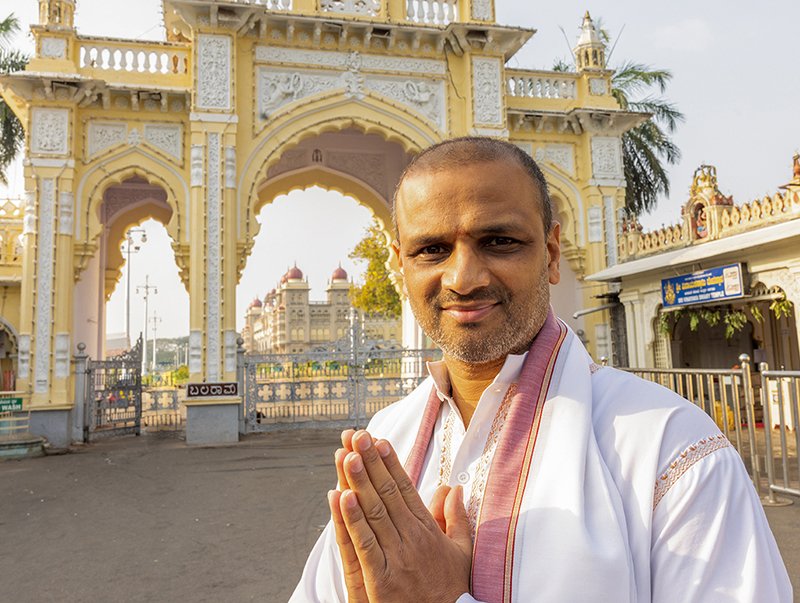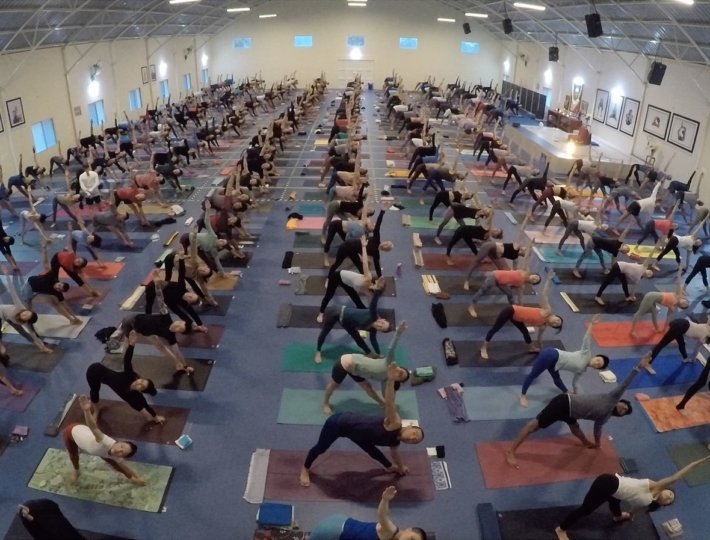It’s not news that holistic health practices, such as yoga, pranayama, and meditation play a huge role in easing stress and anxiety and reducing inflammation—an underlying cause of most illnesses, including heart and autoimmune diseases as well as cancer, explains Sonima mediation advisor Deepak Chopra, MD in a Facebook Live video, filmed in September (see below). Even the smallest behavior modifications, such as adopting these practices, can help optimize health.
Researchers, who have been studying the powerful mind-body effects of these holistic practices, found that a key factor may be the vagus nerve, the largest cranial nerve that relays messages between the brain and the respiratory, digestive, and nervous systems. Your breathing, digestion, and heart rate are all directly connected to the vagus nerve. This neural pathway facilitates your ability to find calm. How does it work? It activates the “relaxation response” of the parasympathetic nervous system, which, in turn, decreases anxiety, stress, and inflammation.
“The vagus nerve is called the nerve of emotion,” says renowned Ashtanga teacher and scholar Eddie Stern, who appears with Chopra in the Facebook Live. “It impacts whether you feel safe and protected in a secure, grounded place,” he says. This is why practices that tap into this nerve can improve one’s state of mind and overall sense of comfort while reducing stress and inflammation.
Low vagal tone indicates stress and is characterized by anxiety, negativity, weak digestion, depression, and inflammation. Optimal vagal tone is illustrated by one’s ability to manage stress, denoted by a balanced disposition and psychological well-being. Thus, it is vital to do what you can to elevate vagal tone. Several practices can enable you to accomplish this.
Yoga, mindfulness, meditation, and breath work have a strong impact on vagal tone. In a 2016 study from Carnegie Mellon University (CMU) published in Biological Psychiatry, 35 test subjects practiced mindfulness meditation as a means to handle life’s stressors, specifically unemployment. After four months, subjects showed higher levels of brain connectivity and lowered inflammation, indicating healthy vagal tone.
“We think that these brain changes provide a neurobiological marker for improved executive control and stress resilience. These changes improve a broad range of stress-related health outcomes, such as your inflammatory health,” says J. David Creswell, PhD, lead author of the study and associate professor of psychology at CMU.
This resilience and adaptability is what allows you to minimize anxiety and enhance ease. “The more flexible you are, the more adaptable you are. You must stimulate the vagus nerve to do this,” says Chopra, who adds, “Breathing is one of the fastest and easiest ways to activate the vagus nerve. When you apply yogic practices, you are able to utilize the body and mind to experience pure consciousness also known as a sense of oneness.”
“Practicing loving-kindness and gratitude both tone the vagus nerve. For example, if you breathe with kindness, then you are doubling the effect on this part of your physiology,” says Stern. Science supports this, too: A 2015 meta-analysis published in Frontiers in Psychology found that those who engaged in loving-kindness meditation showed decreased stress responses.
Related: 10-Minute Loving-Kindness Meditation
Try this simple practice to nurture your vagus nerve. It is based on the idea of resonance breathing, which is when your sympathetic and parasympathetic nervous systems come into harmonic balance. It’s important to note that “resonance” is the scientific word for when your heart rate, heart rate variability, blood pressure, and brainwave function come into a coherent frequency.
According to a new app called The Breathing App, created by Chopra and Stern, this resonance breath frequency is established when you breathe at a rate of six breaths per minute rather than the usual 15 to 18. Resonance breathing has been found to regulate depression, ameliorate symptoms of pain, and boost mood and resilience. It is the approximate rate of breathing that Buddhist monks and yogis enter while meditating. As a guide, you can use The Breathing App or count the seconds.
Resonance Breath Practice
1. Simply notice the breath.
2. Start to slow the inhales and elongate the exhales.
3. Choose the length of time that works best for you:
*Inhale for 4 seconds, exhale for 6
*Inhale for 5 seconds, exhale for 5 seconds
*Inhale for 6 seconds, exhale for 6 seconds (true resonance)
*Inhale for 5 seconds, exhale for 7 seconds
Notice how you feel after just a few minutes. What is the state of your mind? Allow the calm to permeate your being. Your vagus nerve will reward you.








Comments (0)